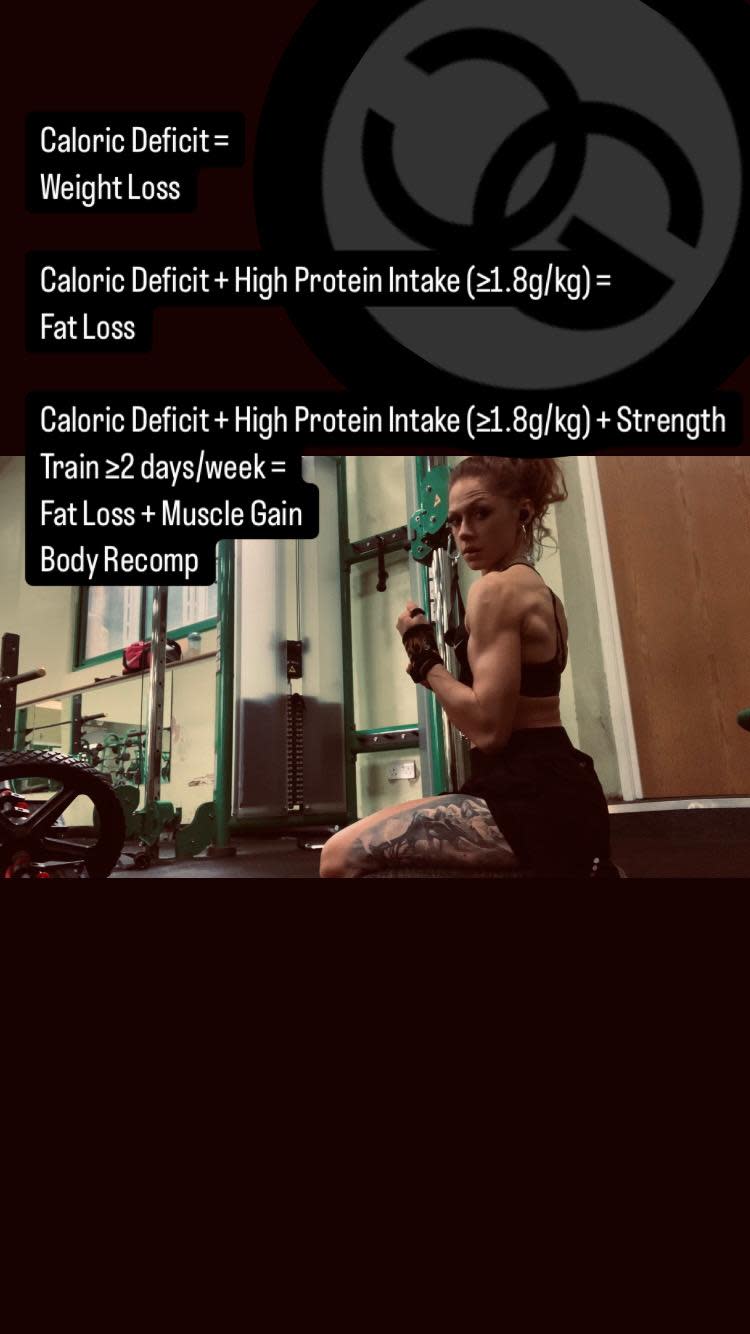Podcast Pondering: SBS 9 Q&A



Female hormonal cycle
Oestrogen = good, (glycogen sparring, muscle recovery aid and reduction in inflammation following bouts of training). Progesterone = bad, (in the sense of counteracting many of these positives). Because why not butcher the science behind it and simplify it... every other bugger does.
First half; O start to increase. P remains low.
Mid-point/start of ovulation; P rises.
Second half; O and P high... then period starts.
Therefore logic states; during follicular stage (^O) may be the more favourable time to train and recover. Leuteal phase... not so much. Although, as mentioned, only a handful of studies support this. And there are a myriad of extraneous variables, (eg PSYCHOLOGICAL perceptions and INDIVIDUAL DIFFERENCES) all contributing.
Don't overdo it... just consider perhaps loading volume in F and, if one were to have a deload then bonus to chuck it in the L phase... why not?
Birth control... depends on what you’re on... depends if it’s exogenous or endogenous hormones... and there’s limited research. So I daren’t comment. It’s not my area of expertise. However; don’t be scared by the old studies, as they’re on the old methods of BC, (nowadays they use less androgenic progestins* which bind to the androgen receptor and block uptake... hence the hampered hypertrophy and training adaptations)
*different from progesterone.... otherwise blokes would be stacking up the pill with their Tren... no.
Rate of weight loss; ‘where you’re starting, where you’re going and why you’re doing it’. Amazing. There is no ideal rate of weight loss. However, generically speaking; 0.5-1% of bodymass per week. All professionals will have their take on this. But this is a guide to mitigate the negatives of; ruined training, hormone imbalances, (testosterone for example) metabolic meltdown etc. Your macronutrient composition and training regime throughout the dieting phase will also have a huge effect on LBM etcetc. If you’ve got a huge amount of weight to lose this all unlikely... just consider improving your health markers and get your body moving as it should, make it strong AF, control your caloric intake and poof, off the lbs will shed... you won’t be flapping about the rate they do, you’ll just be chuffed they are. In the cases of the super lean; there is so much minutia to consider that an guide of rate of weight loss is rather a moo point.
The contentious predicament of anterior pelvic tilt...another bro favourite where everyone’s an expert when really no one can dictate definitely either way and to do so would refute the existing evidence at hand and also do a disservice to the individual differences/ squat patterns/ preferences/ biomechanics of an athlete as well. General safe lines to run between; (or, haha, should I say squat between) Don’t flex your back under load, however this is what leads one to hyperextend their spine... thus anterior pelvic tilt... hence associated issues. Not necessarily the anterior pelvic tilt... more of a chicken and egg, cause and correlation scenario. They state, to which I concur, simply practicing movements within which one would naturally emphasise a neutral, or even to some degree emphasised posterior pelvic tilt can help to establish more favourable alignment should an athlete find their squat to be causing them issues, (eg hamstring death) for example; glute bridge, BW squat, deadbugs, (my favourite... anecdotally I use these a lot reaping great rewards extending beyond the realms of just squats, pelvic tilt, lumbar alignment, core connection and breathing control). Funnily enough; go lighter, re-establish correct movement execution and motor control, problem solved...
Calculating caloric requirements for bulking phase... yes you should be adjusting these according to BW changes... no difference from when one needs to adapt for a deficit and dieting phase. Although the justification for either way may differ; the process remains the same, and the extent to which one needs to make allowances will also depend on the individual and their EE adaptation along the way. 0.25-0.5kgBW/week, (200-500kcals above maintenance, but consistency and accuracy of monitoring methods will be the only way to accurately establish a surplus), rough guide with the hope of maximising MPS and new muscle tissue while keeping fat to a minimum.
Connective Tissue adaptation to RT; (presumption made that this is in reference for collagen comprising tendons). Endo/Epi/Perimysium if you want to be fancy. Mostly just think of muscle tendon unit as one... no need to differentiate between muscle and tendon to the degree that many do, (rehab and other caveats aside).
Within muscle collagen and tissue; RT leads to increased connections thus increased lateral force transmission down the whole cascade from matrix, to muscle to output, (not human study).
Tendons; debate as to whether tendons actually thicken with training... depends on the study you read, the length of the study, the p’s etc. Adaptations more affiliated with how the collagen is orientated, (eg alignment with direction of force) rather than how much there is.
Steroids... rapid increase in strength... increased injury risk as connective tissue can’t ‘keep up’. Yes logical, although to study and prove is tricky due to p’s in question. I’m biased... if you’re juiced out your eyeballs then this should be the least of your worries anyway, concern yourself with your heart giving out and not having any balls in 10years time. The podcast does raise the question of whether the sport of Strongman and increased injury prevalence could be more strongly associated with an increase prevalence of steroids, or whether it’s simply an inherently risk of the sport, (although I rephrased for a more diplomatically appropriate means). Let’s also not forget the role of GH and collagen synthesis*, (think rehab here... think also about correctly conditioning it to align given my above reference to strength) but that’s me playing devils advocate and in this instance is flippantly comparable to saying cardio burns fat... well yes but not eating 20 doughnuts would be better for your health.
*doesn’t really do a lot for skeletal muscle growth. They do mention in may in older populations due to a lower basal melatonin level thus changing secretion levels... however hit me up if you can find the study on this.
Fat timing; doesn’t matter. Keep it within the hormonally healthy ranges, eat your EFA... how to do this... just eat healthy and you’ll be hard pushed not to achieve this. 0.6-0.7g/kgBW largely purported as safe minimal other than that, move on. (Carb and Prot, yes timing matters!).
Their ending giggle; no blending your food doesn’t ruin the nutritional value of it. Chug your chicken shakes as you wish, (although satiety does relate to the mastication process).
“People think if you read a lot of science you’ll be a good coach. In fact being a good coach is a complete skill set in itself”. I say no more. I’ve historically preached enough. Ponder as you wish.

